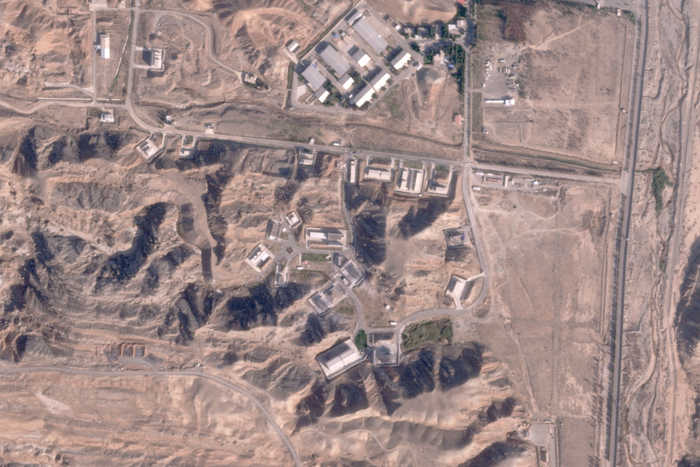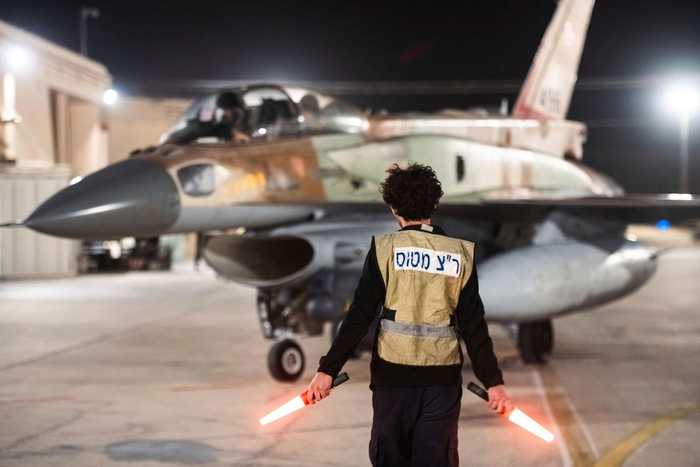Published 08:33 IST, October 28th 2024
Iran's Air Defence System Out of Order After Israel's Operation 'Days of Repentance': Report
Israel's recent military operation, named 'Days of Repentance,' has left all of Iran’s air defence systems out of service, said a report.
- World News
- 7 min read
New Delhi: Israel's recent military operation, 'Days of Repentance', has left all of Iran’s air defence systems out of service, said a report. An Israeli official told The Wall Street Journal that Iranian defences are now inoperable after Israel's strikes.
The operation involved pre-dawn airstrikes on Saturday (October 26), with Israeli forces targeting military installations across Iran, including a secretive military base southeast of Tehran. This base has previously been associated with Iran’s former nuclear weapons program. Another base linked to Iran’s ballistic missile program was also hit.
The Israeli assault came as a response to a recent barrage of ballistic missiles Iran fired at Israel, marking the first instance of open military action by Israel against Iran. The strikes reportedly damaged Iran's advanced air defences, raising concerns over Iran’s susceptibility to future attacks amid heightened tensions between the two nations.
During the prolonged assault, Israeli warplanes struck targets in three Iranian provinces, including three Russian-supplied S-300 aerial defence systems, according to US and Israeli officials. An additional air defence system was also targeted, with an Israeli official confirming that all of Iran’s defence systems were rendered unusable.

In response to recent Israeli airstrikes on Iranian military targets, Supreme Leader Ayatollah Ali Khamenei urged Iranian officials to establish a strategy to demonstrate Iran’s power to Israel, as reported by the IRNA news agency on Sunday. Khamenei stressed the importance of a balanced reaction, stating, “the evil committed by the Zionist regime should neither be downplayed nor exaggerated.” He mentioned that the strikes on missile factories and military sites near Tehran and western Iran caused limited damage.
Meanwhile, Israeli Prime Minister Benjamin Netanyahu separately said Sunday that Israel’s strikes “severely harmed” Iran and that the barrage “achieved all its goals."
The Israeli military carried out three waves of airstrikes early Saturday, heightening regional tensions. US President Joe Biden has called for restraint to avoid further conflict. In his statement, Khamenei indicated that Iran's show of strength should align with the interests of the Iranian people and the nation.
Rockets were fired into Israel from Lebanon on Sunday but were intercepted by the Israel Defense Forces (IDF), according to the Associated Press. The IDF also reported intercepting around 190 projectiles, allegedly launched by Hezbollah, on Saturday night, with some causing small fires in dry brush visible from Israel’s Golan Heights.
Israeli forces conducted “precise strikes on military targets in Iran” early Saturday in retaliation for Iran's October 1 ballistic missile attack, officials informed the Associated Press. The Israeli military’s statement asserted, “The regime in Iran and its proxies in the region have been relentlessly attacking Israel since October 7 – across seven fronts – including direct attacks from Iranian soil. Like every other sovereign country, the State of Israel has the right and duty to respond.”
Damage spread across three Iranian provinces
It remains unclear how many sites in total were targeted in the Israeli attack. There have been no images of damage so far released by Iran's military.
Iranian officials have identified affected areas as being in Ilam, Khuzestan and Tehran provinces. Burned fields could be seen in satellite images from Planet Labs PBC around Iran's Tange Bijar natural gas production site in Ilam province on Saturday, though it wasn't immediately clear if it was related to the attack. Ilam province sits on the Iran-Iraq border in western Iran.
The most telling damage could be seen in Planet Labs images of Parchin, some 40 kilometers (25 miles) southeast of downtown Tehran near the Mamalu Dam. There, one structure appeared to be totally destroyed while others looked damaged in the attack.
At Khojir, some 20 kilometers (12 miles) away from downtown Tehran, damage could be seen on at least two structures in satellite images.
Analysts including Decker Eveleth at the Virginia-based think tank CNA, Joe Truzman at the Washington-based Foundation for Defense of Democracies and former United Nations weapon inspector David Albright, as well as other open-source experts, first identified the damage to the bases. The locations of the two bases correspond to videos obtained by the AP showing Iranian air defense systems firing in the vicinity early Saturday.

Base linked to Iran's onetime nuclear weapons program
At Parchin, Albright's Institute for Science and International Security identified the destroyed building against a mountainside as “Taleghan 2.” It said an archive of Iranian nuclear data earlier seized by Israel identified the building as housing “a smaller, elongated high explosive chamber and a flash X-ray system to examine small-scale high explosive tests.”
“Such tests may have included high explosives compressing a core of natural uranium, simulating the initiation of a nuclear explosive,” a 2018 report by the institute says.
In a message posted to the social platform X early Sunday, the institute added: “It is not certain whether Iran used uranium at ‘Taleghan 2,’ but it is possible it studied the compression of natural uranium hemispheres, which would explain its hasty and secretive renovation efforts following the IAEA’s request to access Parchin in 2011.”
It's unclear what, if any, equipment would have been inside of the “Taleghan 2" building early Saturday. There were no Israeli strikes on Iran's oil industry, nor its nuclear enrichment sites or its nuclear power plant at Bushehr during the assault.
Rafael Mariano Grossi, who leads the IAEA, confirmed that on X, saying “Iran’s nuclear facilities have not been impacted.”
“Inspectors are safe and continue their vital work,” he added. “I call for prudence and restraint from actions that could jeopardize the safety & security of nuclear & other radioactive materials.”
Damage seen at facilities for Iran's ballistic missile program
Other buildings destroyed at Khojir and Parchin likely included buildings where Iran used industrial mixers to create the solid fuel needed for its extensive ballistic missile arsenal, Eveleth said.
In a statement issued immediately after the attack Saturday, the Israeli military said it targeted “missile manufacturing facilities used to produce the missiles that Iran fired at the state of Israel over the last year.”
Destroying such sites could greatly disrupt Iran's ability to manufacture new ballistic missiles to replenish its arsenal after the two attacks on Israel. Iran's paramilitary Revolutionary Guard, which oversees the country's ballistic missile program, has been silent since Saturday's attack.
Iran's overall ballistic missile arsenal, which includes shorter-range missiles unable to reach Israel, was estimated to be “over 3,000” by Gen. Kenneth McKenzie, then-commander of the U.S. military's Central Command, in testimony to the U.S. Senate in 2022. In the time since, Iran has fired hundreds of the missiles in a series of attacks.
There have been no videos or photos posted to social media of missile parts or damage in civilian neighborhoods following the recent attack — suggesting that the Israeli strikes were far more accurate that Iran’s ballistic missile barrages targeting Israel in April and October. Israel relied on aircraft-fired missiles during its attack.
However, one factory appeared to have been hit in Shamsabad Industrial City, just south of Tehran near Imam Khomeini International Airport, the country's main gateway to the outside world. Online videos of the damaged building corresponded to an address for a firm known as TIECO, which advertises itself as building advanced machinery used in Iran's oil and gas industry.
Officials at TIECO requested the AP write the company a letter before responding to questions. The firm did not reply to a letter sent to it.
(With inputs from AP)
Updated 14:00 IST, October 28th 2024